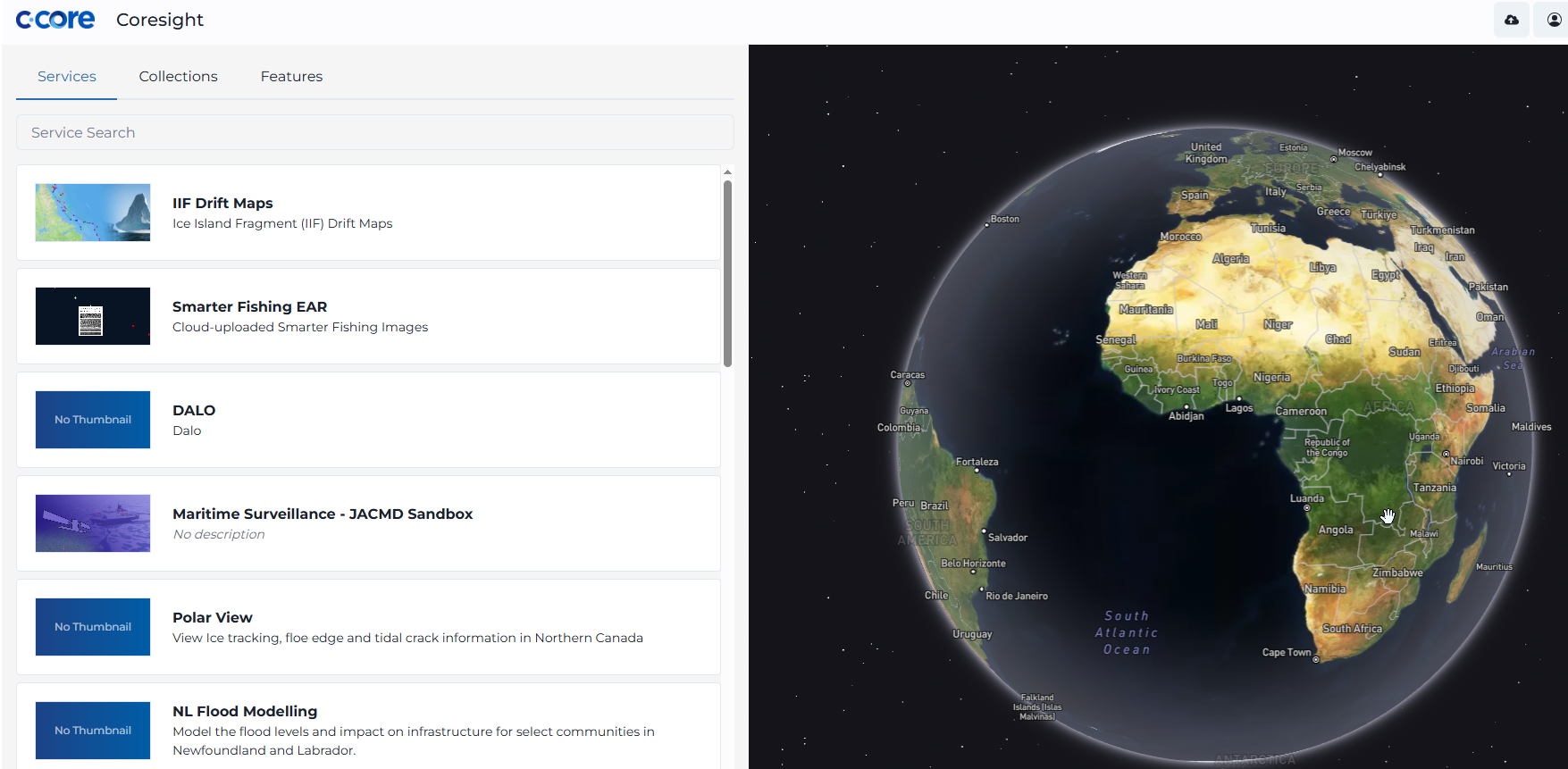
C-Core CoreSight
The CoreSight project (St.Johns', NL) is a modern, cloud-native application designed to deliver a scalable, secure, and efficient data analytics and visualization platform. It leverages a robust technology stack and DevOps practices to streamline development, deployment, and maintenance.
John Doe
—
4/6/2021
Gallery
The C-Core CoreSight project is a cloud-native platform designed for scalable data analytics and visualization, targeting use cases such as [insert specific use case, e.g., IoT monitoring, financial analytics]. Built with a modern tech stack, it integrates a React-based frontend with Next.js for server-side rendering and static site generation, ensuring fast, SEO-friendly user interfaces. The project leverages GitHub for version control and GitHub Actions for CI/CD, as evidenced by the repository cloning and build processes in the deployment logs.
The backend is powered by FastAPI for high-performance RESTful APIs and Hasura for real-time GraphQL APIs over a PostgreSQL database, enabling efficient data querying and subscriptions. Python drives the core backend logic, with Poetry managing dependencies for reproducible builds and Alembic handling database schema migrations to ensure seamless updates.
For data storage, MinIO provides an S3-compatible object storage solution to manage large-scale unstructured data, such as files or datasets, while PostgreSQL supports structured data for complex queries. This combination ensures flexibility and scalability for diverse data workloads, making the platform suitable for data-intensive applications.
The infrastructure is defined using Terraform, enabling Infrastructure-as-Code for provisioning cloud resources across providers like AWS, GCP, or Azure. Docker ensures consistent environments across development and production. The deployment logs indicate the use of Node.js 22.13.1 and npm for frontend builds, with tools like Vercel CLI and Cloudflare’s Next-on-Pages facilitating deployment to serverless or edge environments.
The project employs GitHub Actions for CI/CD, automating testing, linting (using tools like Black, Flake8, and Pytest), and deployment. The logs show a build process that clones the repository (galadriel-tech-stack), installs dependencies, and runs npm run build for the Next.js frontend. However, a TypeError during prerendering of the /project/1 page caused the build to fail, indicating an issue with undefined auth property access in the Next.js code.
Key features include real-time data visualization through React-based dashboards, powered by GraphQL subscriptions via Hasura, and a scalable API layer combining FastAPI and Hasura for secure, high-performance endpoints. The platform supports automated infrastructure provisioning with Terraform, database migrations with Alembic, and consistent dependency management with Poetry.
The deployment logs reveal challenges in the build process, specifically a TypeError: Cannot destructure property 'auth' of 'e' as it is undefined in the Next.js code (/project/[id]/page). This suggests a potential issue in the dynamic route handling or authentication logic, possibly due to missing or undefined data during static generation. The logs also note two vulnerabilities (one moderate, one critical) in the npm dependencies, which can be addressed with npm audit fix.
The development workflow is centered around GitHub, with branch-based workflows, pull requests, and code reviews. The repository structure includes /frontend for the Next.js/React application, /backend for FastAPI, Hasura, and Python logic, /infrastructure for Terraform scripts, /migrations for Alembic scripts, /tests for unit and integration tests, /ci for GitHub Actions workflows, and /docs for documentation and API specifications.
The project aims to deliver a user-friendly, high-performance platform with scalability to handle growing data volumes and user traffic. It prioritizes a secure, maintainable codebase and infrastructure portability. However, to resolve the build failure, developers should investigate the /project/[id]/page route, ensure proper handling of the auth property, and verify data availability during static generation.
C-Core CoreSight is designed for [insert specific domain, e.g., real-time IoT monitoring, enterprise dashboards]. Its flexible architecture supports custom integrations, but the deployment logs highlight the need to address the prerendering error and dependency vulnerabilities to ensure successful builds and reliable deployments.

